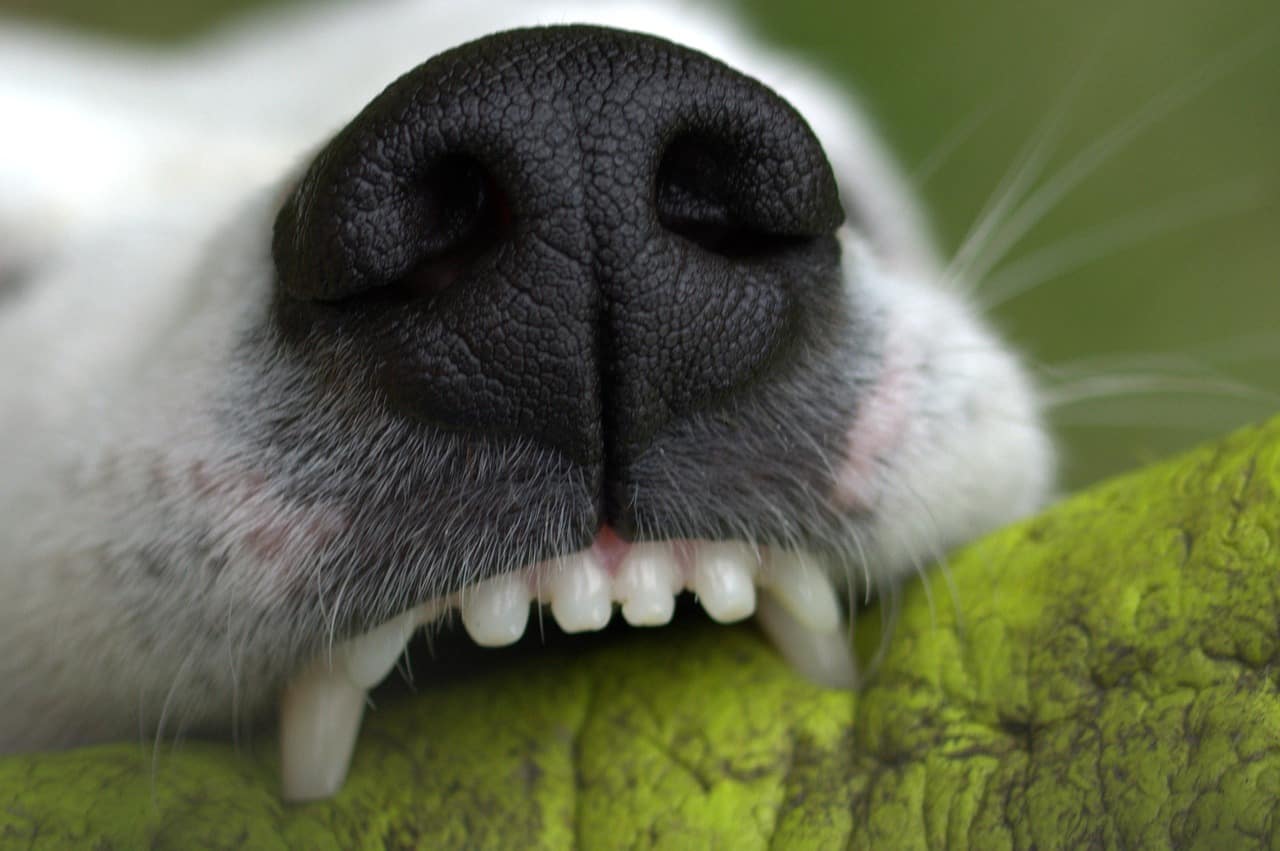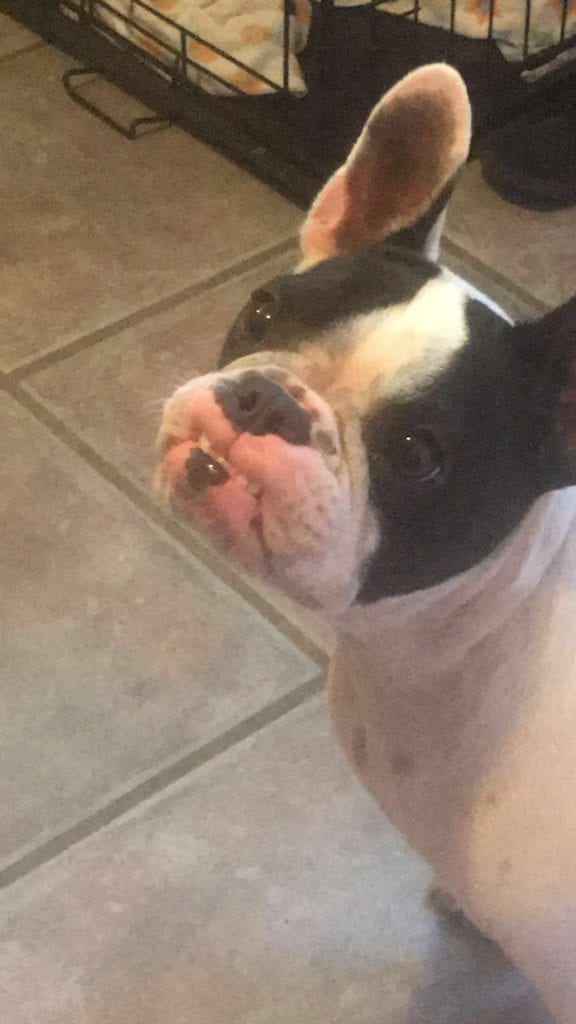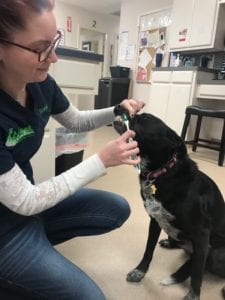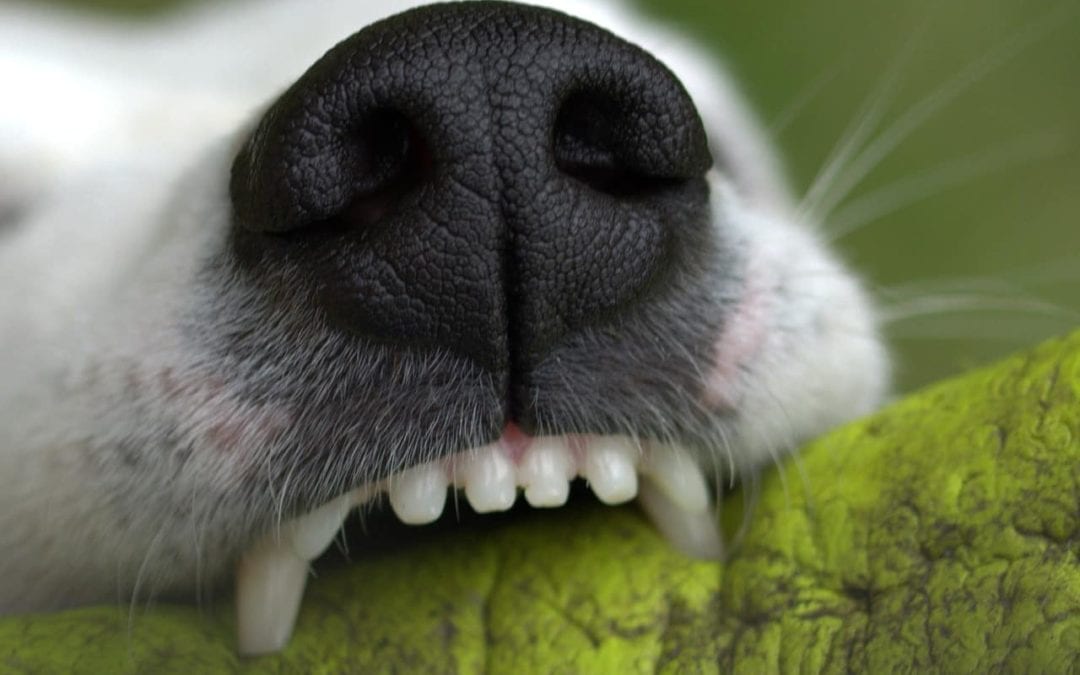Tell Me About: Dental Health

Earlier today I looked at their medical records and to my surprise it has been nearly 2 years since the last cleaning. However, I am in luck! February is national dental month in the vet medicine world and at Country Friends that means we have an educational promo of 10% off of dental cleanings and all that it entails.
Once upon a time a few years ago, I interviewed our Country Friend’s doctors to learn the ‘whys’ and ‘whats’ behind dental cleanings.
“Why does my pet need his/her teeth cleaned?”
“There is a direct correlation between how long a pet lives and how healthy they are, pertaining to dental disease.” – Kerri McMahon, DVM

Frank’s beautiful but crooked teeth
“What happens if I do not have professional dental cleanings performed?”
“Not having professional cleanings performed can lead to secondary dental diseases. Every pet is unique. Some pets will have more plaque and tartar than other pets.” -Barbara Braziel, DVM
Dr. McMahon and Dr. Braziel both came back with answers that pertained to secondary medical concerns and the correlation to how periodontal disease relates to the overall health of your pet.

How Dr. Braziel’s pet, Debby, feels about having her teeth brushed
The American Veterinarian Dental College has this to add about periodontal disease:
The real problem develops as plaque and tartar spread under the gum line. Bacteria in this ‘sub-gingival’ plaque set in motion a cycle of damage to the supporting tissues around the tooth, eventually leading to loss of the tooth. Bacteria under the gum line secrete toxins, which contribute to tissue damage if untreated. These bacteria also stimulate the animal’s immune system. These initial changes cause white blood cells and inflammatory chemical signals to move into the periodontal space (between the gum or bone and the tooth). The function of the white blood cells is to destroy invaders, but chemicals released by the overwhelmed white blood cells cause damage to the supporting tissues of the tooth. Instead of helping the problem, the patient’s own protective system actually worsens the disease when there is severe build-up of plaque and tartar.
I am a technician. I’ve performed many ultrasonic cleanings on many pets. Even so, I decided to ask Country Friend’s Dr. Rhonda (as she is known) to describe the process, how are dental cleanings performed? “A pet is placed under general anesthesia for a full oral exam. After the exam, an ultrasonic cleaning (or prophy) is performed with polishing.” -Rhonda Phillips, DVM
It’s important to know that a basic dental cleaning may be elevated to another level if the patient is older or has poor dental health (which many times is a trait of the breed, i.e. yorkies and dachshunds).

Ultrasonic Scaling
Here is more in-depth information provided by Veterinarian partners:
The professional cleaning performed at the veterinarian’s office is similar to what a person receives at their dentist’s office:
Gross tartar is removed with specific instruments. More delicate tartar deposits are removed from the gum line with other dental instruments.
Periodontal sockets are probed and measured to assess periodontal disease. The roots are planned, meaning tartar is scraped from below the gum line, until the roots are smooth again. The enamel is polished to remove any unevenness left by tartar removal. The mouth is disinfected and possibly treated with a fluoride sealer or plaque repellent. Professional notes are taken on a dental chart, noting abnormalities on each of a dog’s 42 teeth or a cat’s 30 teeth.

Brandi brushing Ava’s teeth
Finally, I spoke with Dr. Westwood about how to keep the yuckiness at bay between dental cleanings. She had an answer that I was personally dreading but knew was coming, “What are the best options for maintenance between professional dental cleanings?”
“Brushing teeth. Special diets are available such as T/D (produced by Hills). Nothing replaces brushing.” -Robin Westwood, DVM
As painful as that is for our busy lives, this is what the VOHC (Veterinary Oral Health Council) has to say that backs Dr. Westwood,
“The key to management of gum disease (for humans or pets!) is prevention. As long as the surfaces of the teeth are cleaned frequently, the gums will stay healthy. Excellent oral health is maintained by daily oral hygiene. The gold standard is brushing. Daily chewing activities can also be effective in maintaining oral health.”
Check out our online pharmacy to see VHOC products that all of our Veterinarian staff recommends. Look for this logo when you are shopping:

Dr. Decker joined our team after I held the initial interviews so today I asked her what she personally uses to keep her girls teeth white and beautiful. I asked, “What is your personal oral health regimen with Addie and Ava?”
“I use, Dental Gel, mint flavored Enzymatic tooth paste, a standard canine tooth brush, and CET oral rinse”

Addie and Ava
Let’s return to my dogs: when I saw that it had been that long since a dental cleaning had been performed, I immediately scheduled both of them to have their teeth cleaned. I am not going to lie to you- I am a busy person; I work at this clinic for 40+ hours every week. I have an active 5 year old son that plays multiple sports, and I have a husband that travels. I’ll let you guess where brushing my dog’s teeth falls on my list of things to do…
If you are like me (a human) the best thing you can do is bring your pet in to see one of our doctors for an oral health exam to which we can schedule your pet a dental cleaning if need be. Best medicine includes an exam before the actual anesthetic procedure so we can make a very accurate treatment plan.
Finally, sometimes dental cleanings can become pricey. We understand. This is why we provided a number of payment options. Please visit with one of our wonderful client service representatives to find out all your options. In the end regular dental maintenance can potentially prolong your pet’s life and improve their quality of life.
Written by blog contributor Nicole Woolly, Client Care Advocate
Sources:
https://www.avdc.org/periodontaldisease.html
https://www.vin.com/veterinarypartner/default.aspx?pid=19239&id=4951515
http://www.vohc.org/

